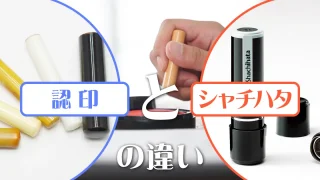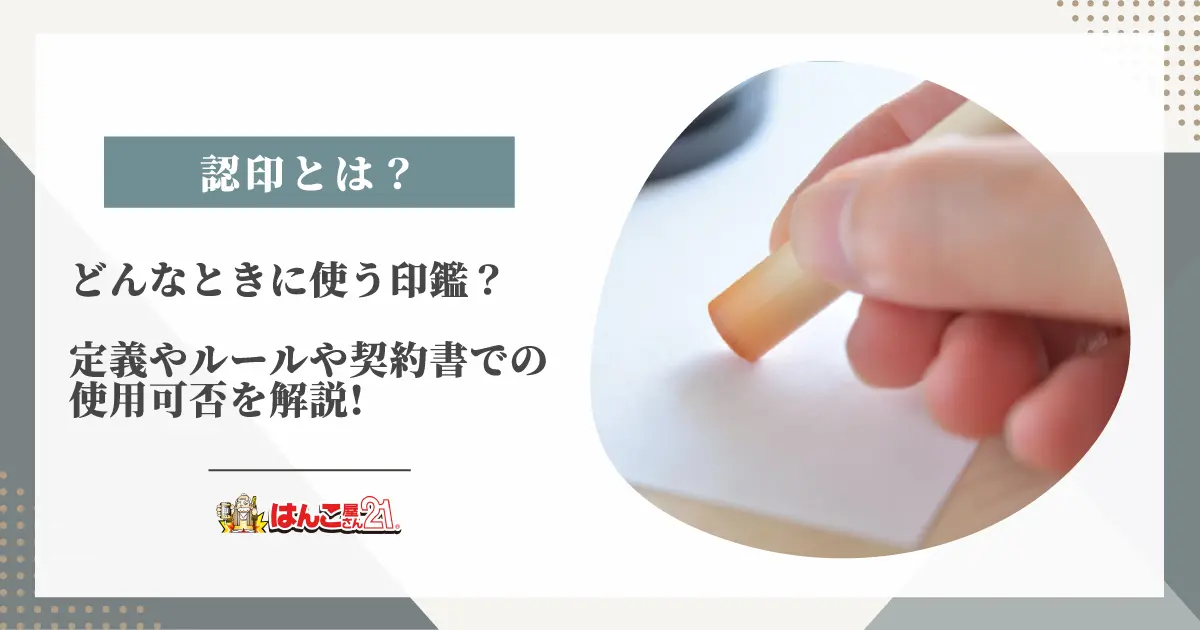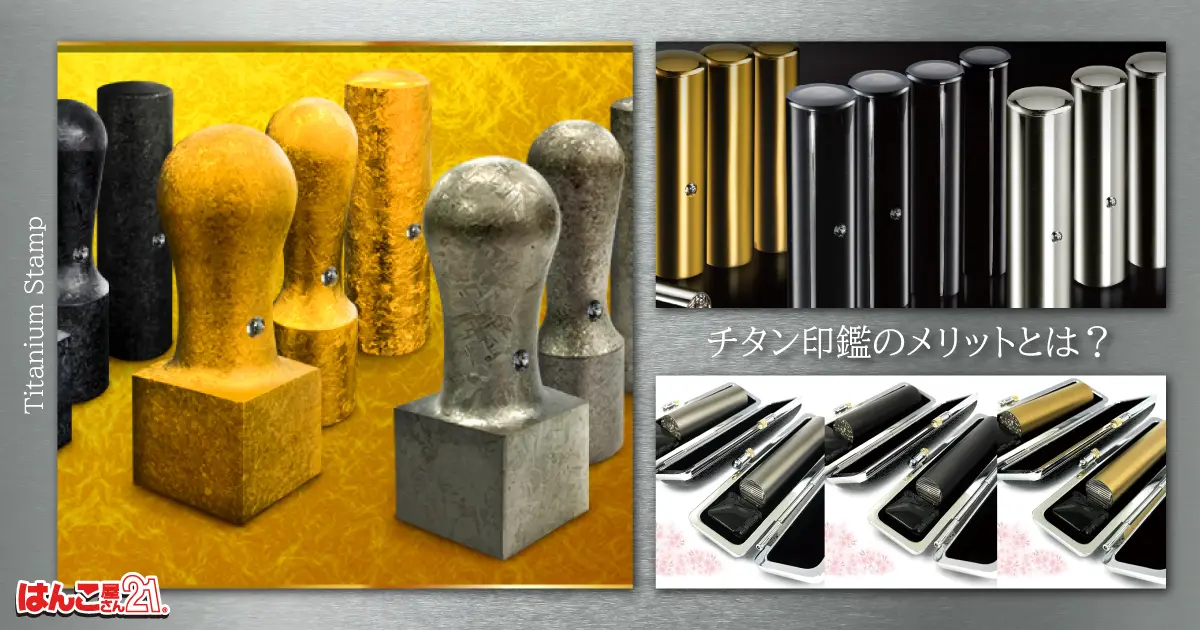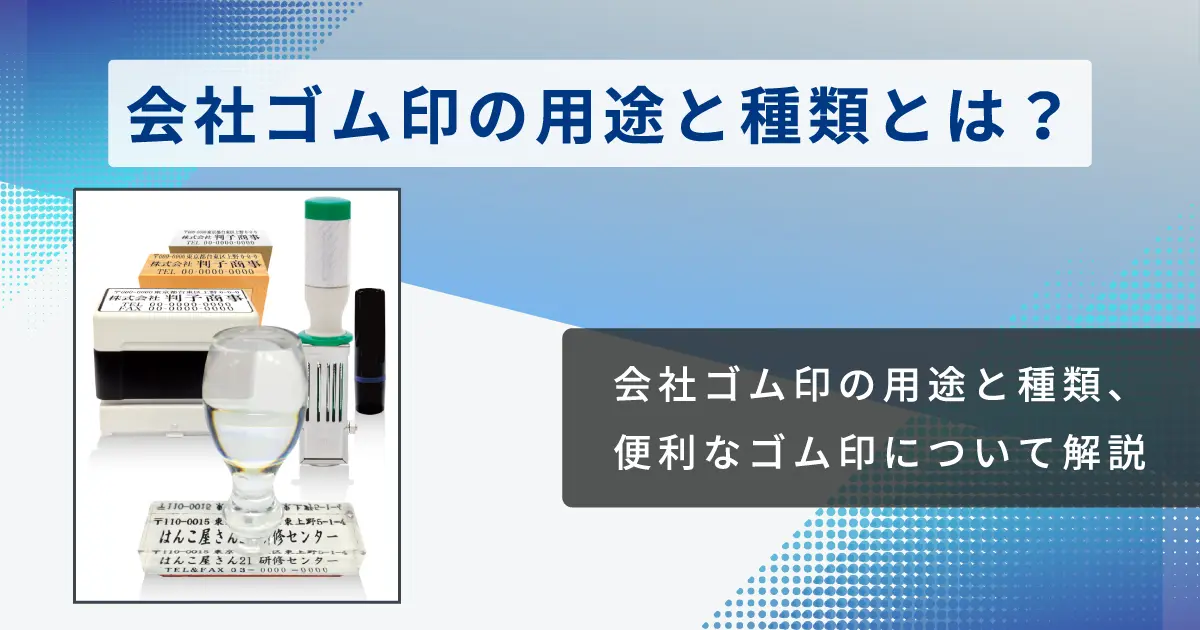There are three main types of personal HANKO: registered seals, bank seals, and registered seals.
Among them, the miten is a HANKO that we often use in our daily lives, but do you know specifically in what situations it is used?
Also, can any type of HANKO be used as a seal?
We will explain the definition and rules of the seal, which is surprisingly difficult to distinguish, and the contracts that can be used.
What is a registered seal?
A registered seal is a HANKO that has not been registered at the municipal office. The seal is often read as ``mitomein,'' but it is not wrong to read it as ``ninin.''
When we think of situations where a seal is affixed, we think of situations such as when receiving mail or completing official procedures at a city, ward, town, or village office.
A seal is like your signature.
It is important that the seal is affixed using a HANKO, so there is no problem even if the seal is affixed using a registered seal or a bank seal. However, for security reasons, it is not recommended to affix a HANKO that has been registered with a government office or financial institution, so if you wish to affix a seal as a verification seal, we recommend that you prepare a special HANKO.
A personal seal is often affixed when signing a simple contract, but even though it is a personal seal, it is still a HANKO seal, and once it is affixed, it has the same effect as a registered seal. Be sure to check the contents of the contract carefully and be careful not to affix your seal too easily.
Definition of seal
As mentioned earlier, a registered seal refers to a HANKO that has not been registered. There is no legal definition, and there is no problem with one person owning multiple copies. Even a HANKO with a picture or a HANKO in any font can be used as a seal. In the case of registered seals, in principle, each person can only have one. Also, if there are pictures in it, it may not be possible to register it.
There is no definition for a personal seal, but it is best to distinguish it from other HANKO when using it.
Type of HANKO
There are three main types of personal HANKO: registered seals, bank seals, and registered seals.
Each seal has a different role, and it is recommended to use HANKO for security reasons. We will briefly explain the types of HANKO so that you can tell them apart.
registered seal
A HANKO registered at the municipal office. A registered seal is an officially recognized HANKO, so it has strong legal effect. As a general rule, each person can only have one bottle. HANKO with pictures may not be able to be registered. Also, if the stamp side is missing, it will not be possible to verify it, so avoid using it continuously.
bank seal
This is a HANKO that is registered when opening an account at a financial institution such as a bank. The HANKO becomes effective only after it is submitted and registered to the bank. As with a registered seal, if the seal surface is missing, there is a risk that verification will not be possible. However, unlike registered seals, one bank employee can have multiple copies.
Seal
This refers to a HANKO that has not been registered. Among registered seals, bank seals, and registered seals, other than registered seals do not require HANKO registration, so they are called registered seals. However, the seal is a HANKO that is seen by many people when receiving home deliveries and performing various procedures. It is recommended that you prepare the bank seal and the registered seal separately, as there is a risk of them being duplicated.
There are no rules regarding the standards for seals.
There are no special rules regarding the standard of the seal, and you can freely choose the size of the seal, the characters and font of the stamp, etc.
However, a personal seal is a HANKO stamped with the meaning of "approval/confirmation", so unlike a registered seal or a bank seal, it should be easy to read, and the impression of the seal should be easy to understand and read.
Stamp size
There are no regulations regarding the size of the seal, but a round seal with a diameter of 10 mm to 12 mm is generally considered to be the standard size. It has to fit in the space to be stamped, so we recommend a size that is not too large. A personal seal is generally smaller in size than a registered seal or a bank seal.
engraved characters
It is common for only the last name to be engraved on the seal, but there is no problem if only the name is engraved. However, if you only use your name, it may be difficult to convey your name to the other person.
There is also no problem if you engrave your full name on the seal. However, as mentioned above, in the case of a personal seal, the diameter is smaller, so the letters in the full name will be finer and may be difficult to read. Also, many people engrave their full name on the registered seal, so in order to distinguish them, many people only use their last name on the registered seal.
If there are multiple people with the same last name for internal use, some people write the first letter of their name in small hiragana. In the case of a personal seal, it is required to be easy to understand, so it is a good idea to decide on the contents of the seal depending on the occasion of use.
typeface
There is no set font for the seal, and you can make it in any font you like. The legibility of the letters is important for the seal, so choose a typeface that is easy to understand and read. We recommend fonts with a clean appearance such as koin font, kaisho font, and gyosho font.

Kointai

block font

Gyosho font
Shachihata and Sanmonban are also a type of seal.
There is no definition for a personal seal, so you can also use a ``shachihata,'' which can be HANKO like a stamp, or a sanmonban that can be purchased at 100 yen shops.
Shachihata generally refers to a penetrating stamp with built-in ink, but it was originally a penetrating stamp made by " Shachihata Co., Ltd. "
This stamp is convenient and useful for receiving parcels as it can be stamped without adding ink.
However, in some cases, such as official document procedures, it may be stated that ``shachihata'' is not allowed. Since the Shachihata alone cannot fulfill the role of the seal, a type of seal that uses vermilion is also required.
Another attractive feature of Sanmonban is that it is cheap and easy to obtain. Sanmonban is a HANKO that is produced in large quantities, so the appearance of the seal may be slightly affected. Avoid using sanmonban in business situations, and instead use a properly tailored seal.
Difference between seal and Shachihata
The penetrating stamp with built-in ink, popularly known as "Shachihata", is attractive because it can be stamped immediately without using ink. Shachihata can also be used as a seal, but it cannot be used in all situations.
Why Shachihata cannot be used
There are two types of seals: HANKO such as Shachihata. For HANKO that use vermilion, we can handle all situations where a mitshu seal is used. On the other hand, in the case of Shachihata, it cannot be used for official documents, bank notifications, and other documents that are marked as ``Shachihata not allowed.''
Since the stamp surface of Shachihata is made of rubber, it easily deforms and deteriorates quickly, so the impression of the seal may change from when it was stamped, and the ink may become thinner after stamping. For the above reasons, it is important to note that Shachihata cannot be used as proof that the HANKO was affixed by the person in question, so there are cases where it cannot be used as a seal for official documents or bank notifications.
Different types of HANKO that use vermilion and how to use shachihata
Shachihata is a very convenient HANKO that can be easily stamped without using ink. However, it is not suitable for all situations, so it is better to have two HANKO along with one that uses vermilion.
[Differences between HANKO using vermillion and the situations in which Shachihata can be used]
| A HANKO using vermilion | Shachihata | |
| Scenes where it can be used as a seal |
|
|
Seals cannot be used for all contracts.
A seal is a HANKO that is mainly used for simple approvals, such as when receiving luggage.
It may not be possible to use it for important contracts or important contracts that involve large amounts of money. We will introduce you to whether or not the seal can be used.
Scenes where you can use your seal
Situations where a personal seal can be used include when confirming the receipt of a parcel, or when approving official document procedures. In most cases, you can also use a personal seal when entering into a simple contract, such as when entering into a contract with a company or when applying for a personal service.
[Scenes when using a registered seal]
- Birth registration
- Marriage registration/divorce notification
- Notification of moving in/notifying of moving out
- Request for a copy of family register
- Application for resident card
- National health insurance procedures
- National pension procedures
- Contract to be submitted to the company
- Receiving a courier
- mail forwarding etc.
Scenes that require a registered seal
A registered seal is required when making important contracts or transactions that involve money. A registered seal is required in most cases, especially for contracts related to real estate. In addition, a registered seal will be required for the following contracts and transactions, so be sure to have one ready in advance.
[Scenes where registered seals are used]
- Real estate buying and selling
- mortgage contract
- Car purchase and scrapping procedures
- inheritance of inheritance
- When taking out life insurance
- When registering a corporation, etc.
Scenes where a bank seal is required
A bank seal is required when opening an account at a financial institution such as a bank. It becomes effective as a bank seal only after it is notified and registered to the bank. Bank seals are the second most legally binding HANKO after registered seals, so they must be handled with care. Bank seals do not need to be HANKO and can be used as a seal, but for security reasons, it is best to avoid using them together.
[Scenes where bank seals are used]
- When making a transaction at a bank counter
- When opening a bank account
- When applying for a credit card
- When registering for account transfer
- When issuing checks, etc.
summary
A registered seal is a HANKO that is used on a daily basis without being registered, and there is no legal definition for it. There are also no special regulations regarding size, etc., and you can choose the characters and font you like to engrave. However, a personal seal is a HANKO that is meant to be seen by the other person as a signature, so it is important that it is easy to see and understand. Additionally, a HANKO cannot be used on any type of contract; it is primarily used when concluding simple contracts. Please note that it cannot be used for important contracts or transactions involving money, or when issuing checks at banks. At Hanko Shop 21 , we have a wide selection of HANKO that can be used as identification HANKO , such as those using vermilion ink and Shachihata. Please order one convenient one according to the scene you will use it.
Related pages





 日本語
日本語 English
English 简体中文
简体中文 繁體中文
繁體中文 한국어
한국어 ไทย
ไทย Tiếng Việt
Tiếng Việt Indonesia
Indonesia Français
Français Español
Español Português
Português


